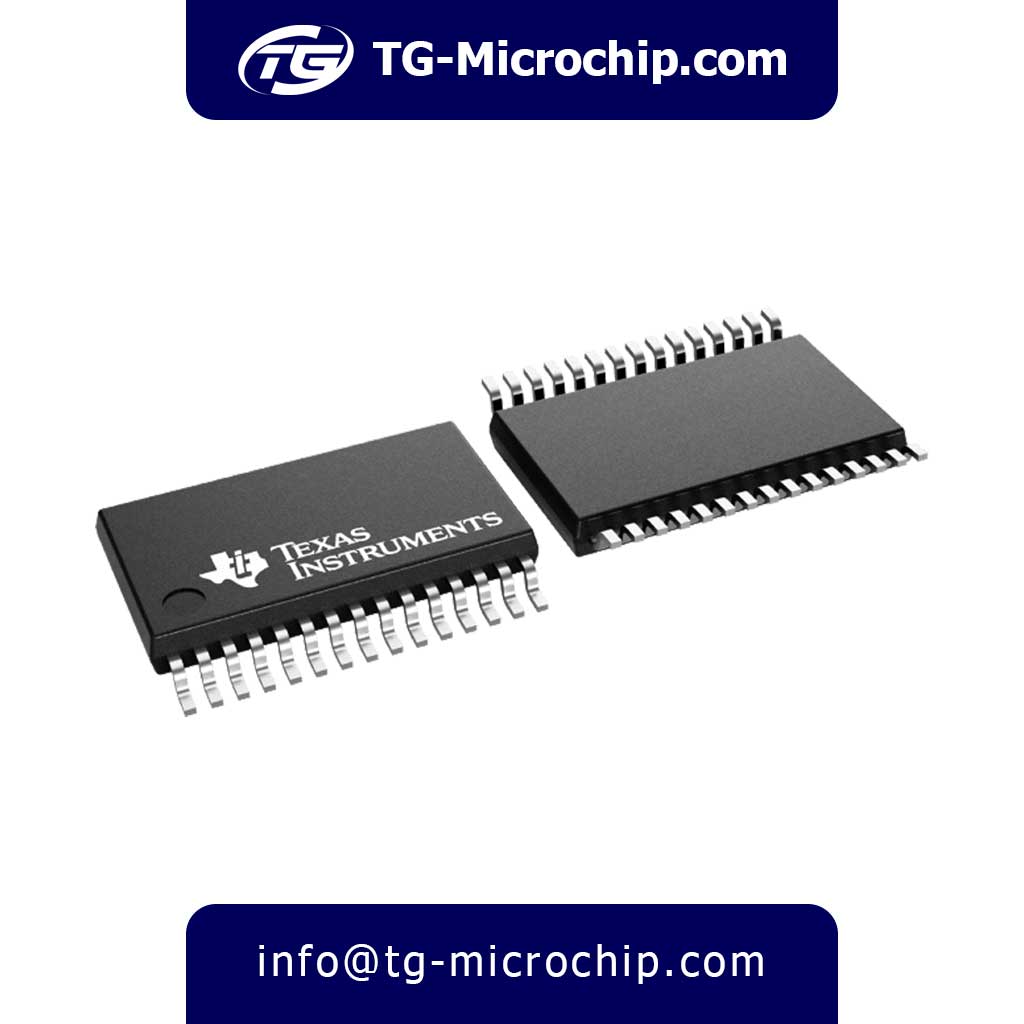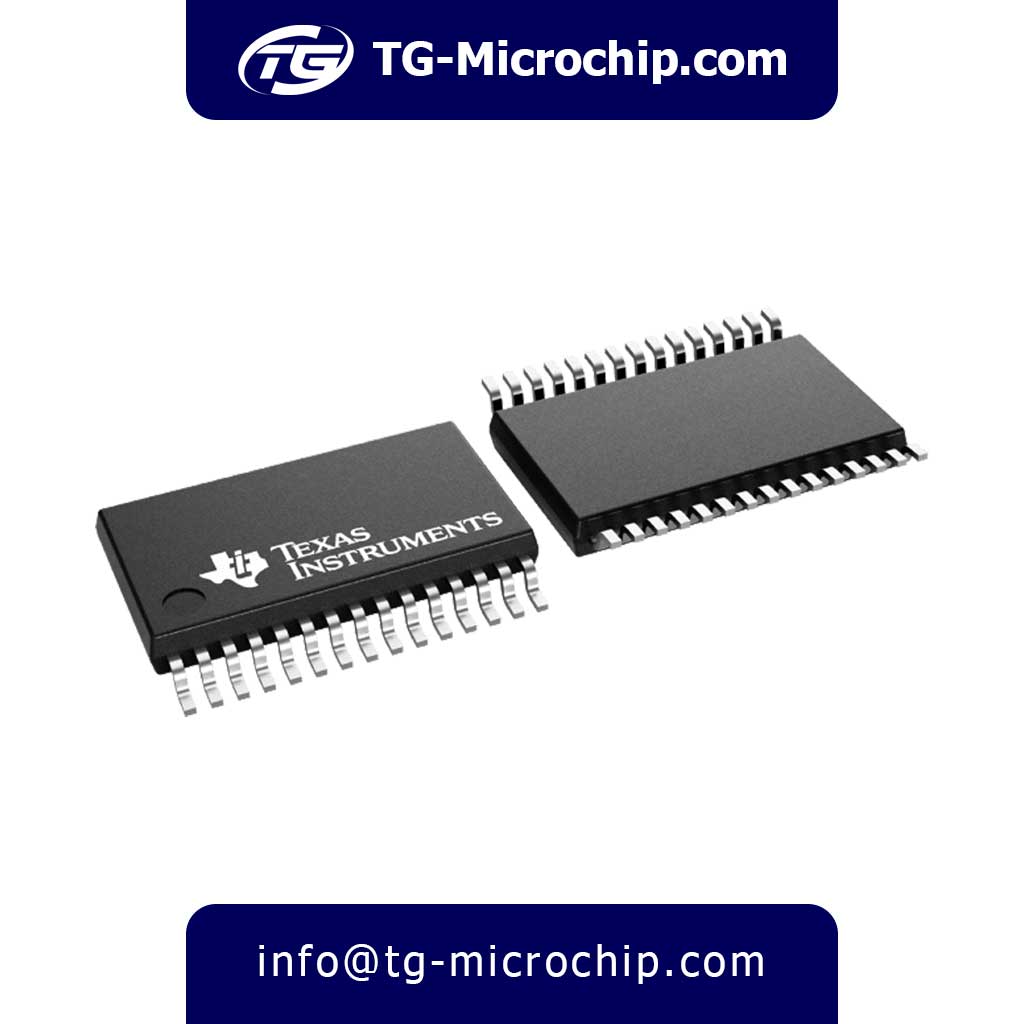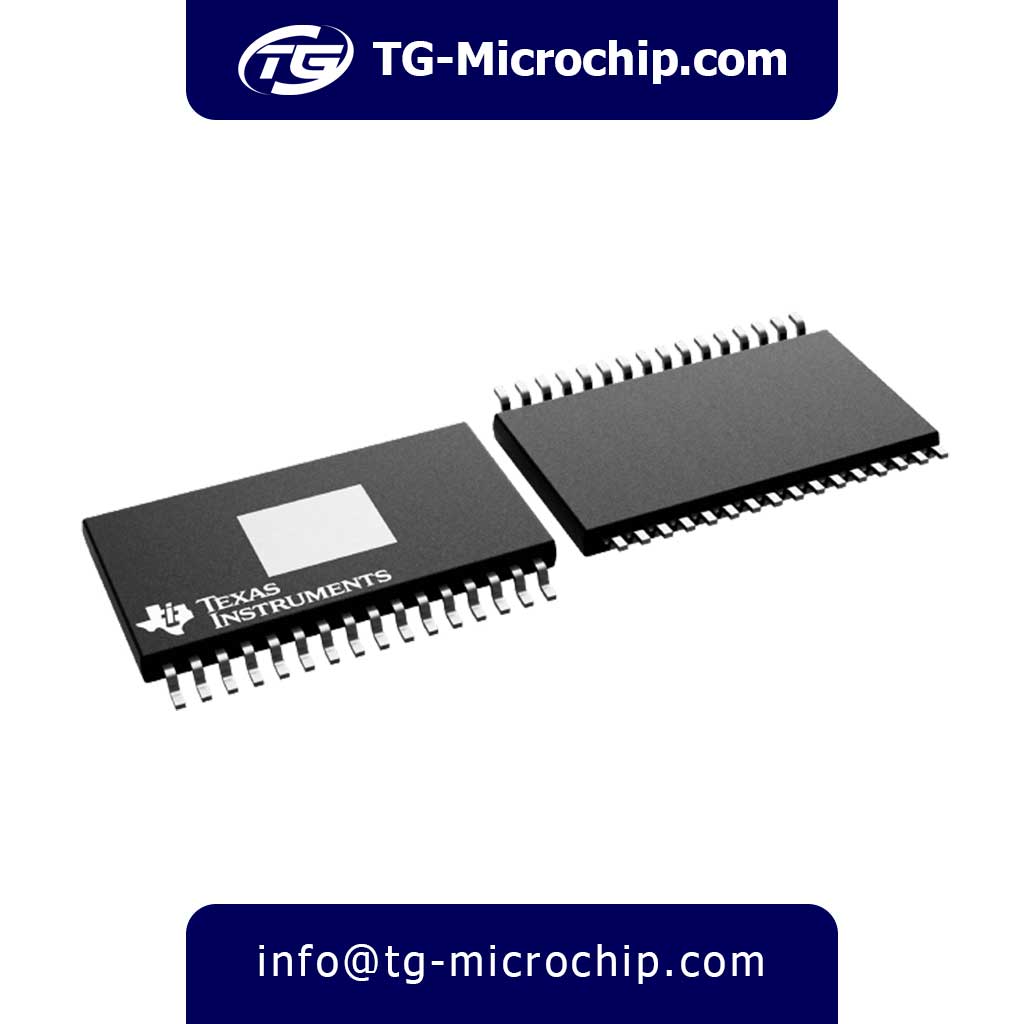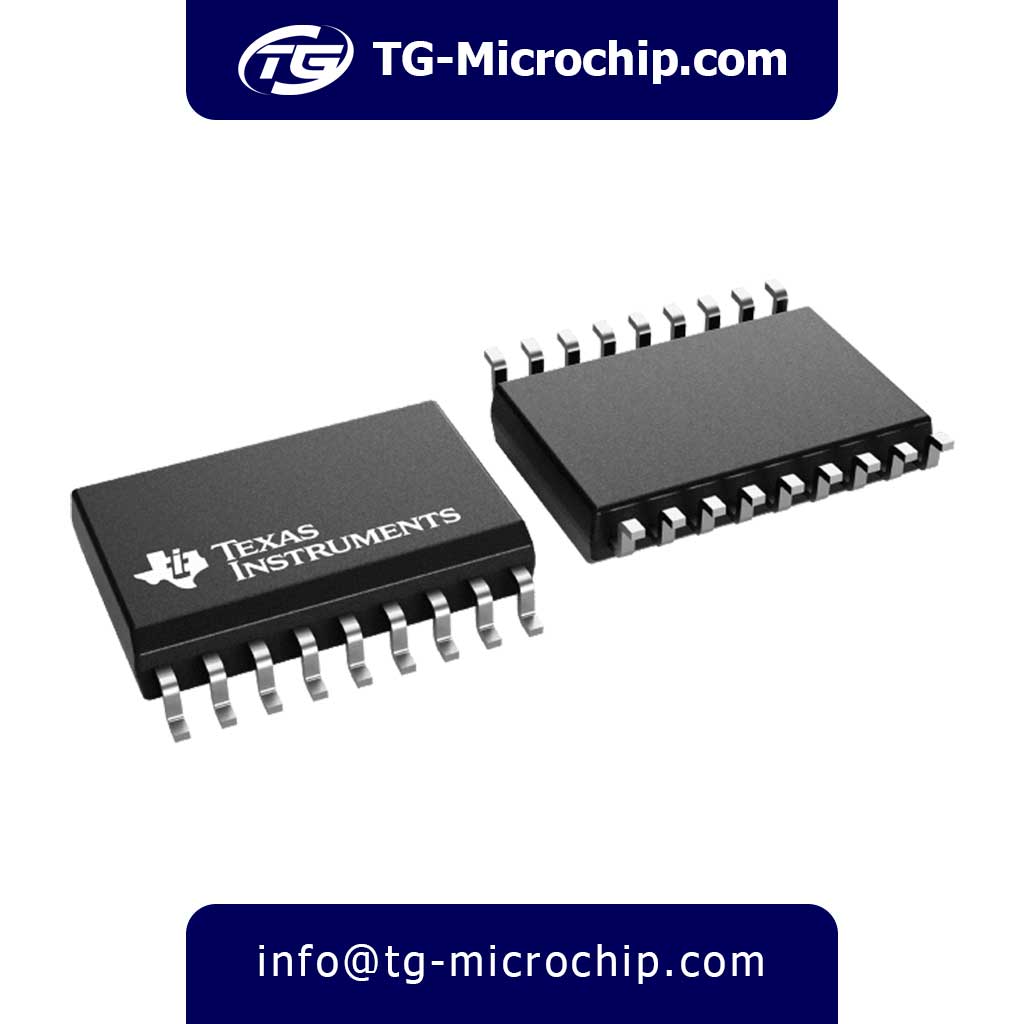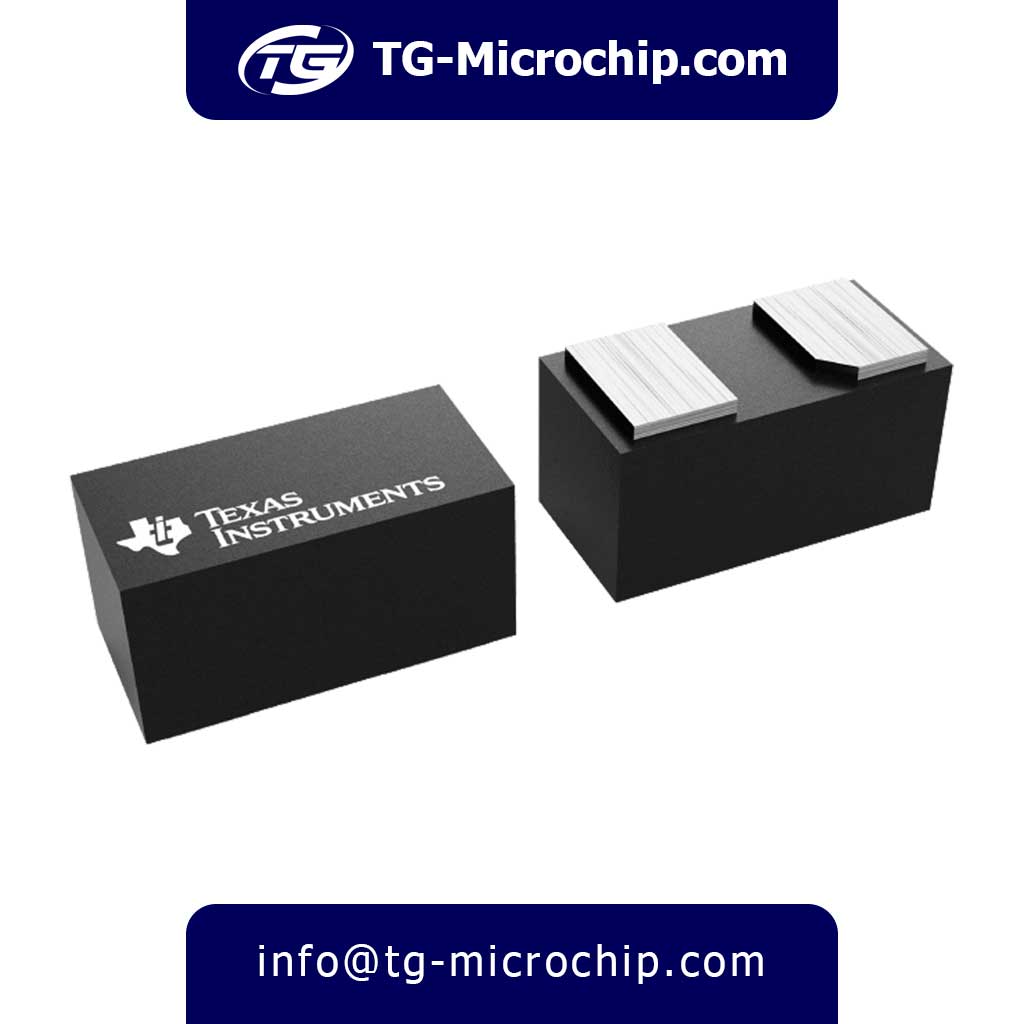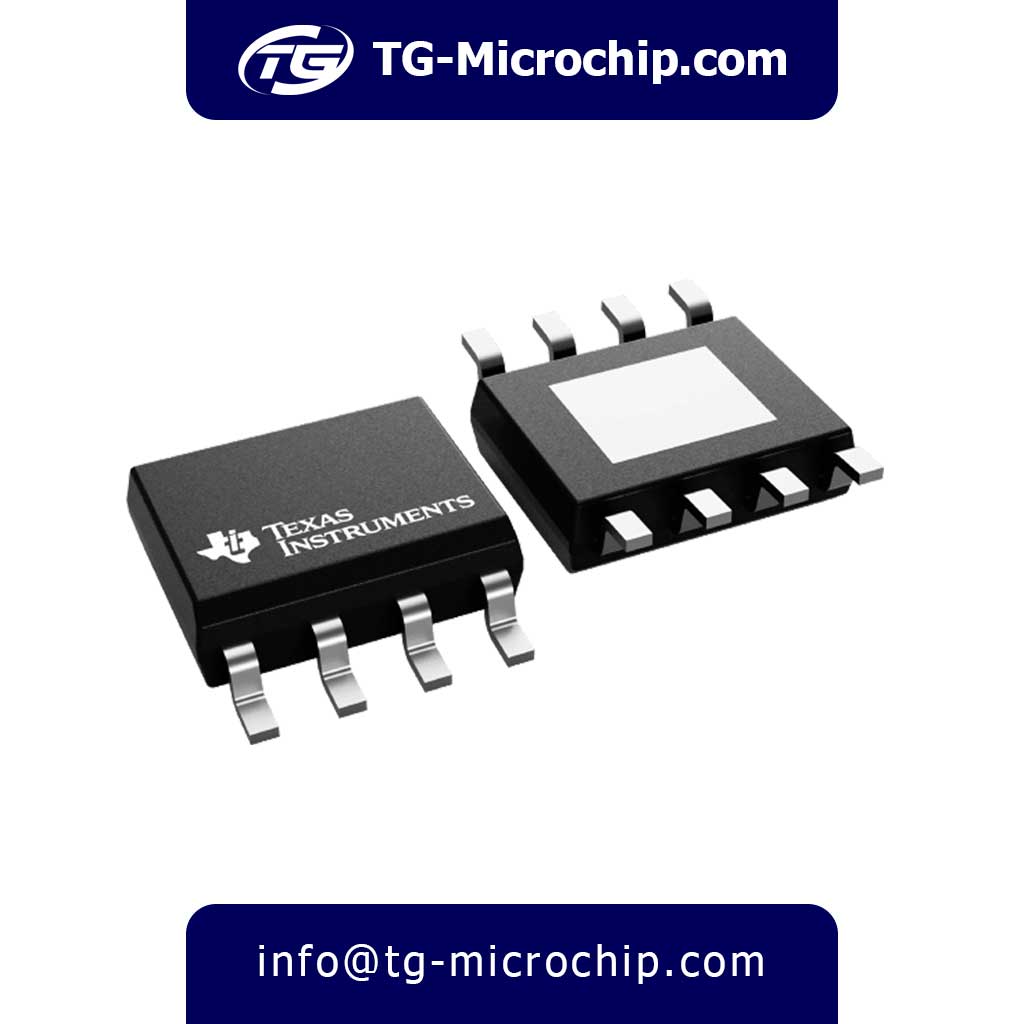For order or price inquiry of BQ7693002DBT Texas Instruments Please click on Buy Order button and fill the RFQ form we will check out inventory and offer you our best price.
Quick Access
About
The BQ7693002DBT from Texas Instruments is a highly integrated battery monitoring and protection IC designed for 3S to 10S lithium-ion (Li-ion), lithium polymer (LiPo), and lithium iron phosphate (LiFePO₄) battery packs. It combines precision voltage monitoring, robust protection features, and flexible configuration options in a compact TSSOP-30 package, making it ideal for applications like e-bikes, power tools, energy storage systems, and medical devices. The IC operates across a wide 4.5V to 60V input range and includes an integrated 3.3V LDO regulator to power external circuitry, simplifying system design while ensuring reliable performance in industrial environments (-40°C to +85°C).
At its core, the BQ7693002DBT provides comprehensive hardware-based protections, including overvoltage (OV), undervoltage (UV), overcurrent (OC), short-circuit (SCP), and temperature monitoring (via external NTCs). These safeguards feature programmable thresholds and response delays, allowing customization for different battery chemistries and use cases. The IC’s <10μs short-circuit response time and ±10mV cell voltage accuracy ensure safe operation under fault conditions, while its coulomb counter (±1% accuracy) enables precise charge tracking. Unlike software-only solutions, critical protections remain active even if the host MCU fails, enhancing system reliability.
The device supports passive cell balancing through external FETs, with configurable current limits (up to 100mA per cell) to address voltage mismatches in multi-cell packs. Communication is handled via a 400kHz I²C interface, which allows real-time monitoring of cell voltages, pack current, and temperature, as well as configuration of protection parameters. A dedicated ALERT pin provides immediate fault notifications, while the IC’s 16-event fault log aids in diagnostics and troubleshooting. With its low sleep current (<5μA), the BQ7693002DBT is optimized for battery-powered applications requiring long standby life.
Compared to competing solutions, the BQ7693002DBT strikes a balance between cost-effectiveness and advanced features, offering a more integrated alternative to discrete protection circuits while avoiding the complexity of high-end battery monitors. It lacks active balancing and daisy-chaining capabilities (unlike the BQ76940 or LTC6811) but excels in mid-range applications where simplicity and reliability are paramount. Reference designs and evaluation modules (EVMs) from Texas Instruments help accelerate development, making this IC a popular choice for mass-market products. Whether used in consumer electronics or industrial systems, the BQ7693002DBT delivers robust battery management with minimal external components.
Key Features
1. Core Protection Capabilities
- Multi-Cell Monitoring
- Supports 3-series to 10-series Li-ion/LiFePO₄ battery stacks
- Individual cell voltage measurement range: 0V to 4.5V (±10mV accuracy)
- Dedicated hardware comparators for:
- Overvoltage (OV) protection: Programmable 4.0V–4.5V
- Undervoltage (UV) protection: Programmable 1.5V–3.5V
- Current Protection
- Integrated coulomb counter with ±1% accuracy
- Configurable thresholds for:
- Overcurrent (OC) in charge/discharge
- Short-circuit protection (SCP) with <10μs response
- Thermal Management
- Supports 2 external NTC thermistors
- Programmable over/under-temperature thresholds
2. Battery Management Functions
- Cell Balancing
- Passive balancing support (requires external FETs)
- Configurable balancing current: Up to 100mA per cell
- Balancing modes:
- Manual (I²C triggered)
- Auto-balancing during charge
- Power Supply
- Integrated 3.3V LDO regulator (50mA output) for external MCUs
- Operating supply range: 6V to 25V (from battery stack)
3. Communication & Control
- I²C Interface
- Standard (100kHz) and fast (400kHz) modes
- 7-bit device addressing (configurable)
- Alert System
- Dedicated ALERT pin for fault interrupts
- 16-event fault log (accessible via I²C)
4. Advanced Diagnostics
- Built-in Self-Tests
- ADC calibration routine
- Protection circuit verification
- Real-Time Monitoring
- Cell voltages (14-bit ADC)
- Pack current (coulomb counter)
- Temperature (via NTC)
5. Electrical Specifications
| Parameter | Value |
|---|---|
| Operating Voltage | 6V – 25V (VDD) |
| Sleep Current | <5μA |
| Active Current | 1.5mA (typical) |
| Balancing FET Drive | 3.3V logic output |
| ESD Protection | ±2kV HBM |
6. Package & Integration
- TSSOP-30 Package
- Compact footprint (6.1mm x 9.7mm)
- Industrial-grade (-40°C to +85°C)
- Minimal External Components
- Requires only:
- Current sense resistor (typ. 1mΩ)
- Balancing FETs + resistors
- NTC network
- Requires only:
7. Configuration Flexibility
- Programmable Parameters
- All protection thresholds
- Delay times (OV/UV/OC response)
- Balancing thresholds
- Register Map
- 128-byte configuration space
- Non-volatile storage for critical settings
8. Safety Certifications
- Designed to meet:
- UL/IEC 62368-1 (with proper implementation)
- RoHS & REACH compliant
Applications
1. Electric Vehicles & E-Mobility
- E-Bikes & E-Scooters – Protects battery packs from overvoltage, undervoltage, and overcurrent during charging/discharging.
- Electric Motorcycles – Ensures safe operation of high-power battery systems.
- Light Electric Vehicles (LEVs) – Provides cell balancing and fault detection for extended battery life.
2. Power Tools & Cordless Equipment
- Drills, Saws, and Grinders – Prevents battery damage from deep discharge or overheating.
- Robotic Lawn Mowers – Monitors battery health in outdoor conditions.
- Industrial Handheld Tools – Enhances safety in high-current applications.
3. Energy Storage Systems (ESS) & Backup Power
- Solar Power Storage – Protects Li-ion/LiFePO₄ batteries in solar inverters.
- UPS (Uninterruptible Power Supplies) – Prevents overcharging and thermal runaway.
- Home Battery Systems – Ensures long-term reliability in residential energy storage.
4. Medical & Portable Healthcare Devices
- Portable Medical Equipment – Maintains stable power in ventilators, monitors, and diagnostic tools.
- Wearable Health Devices – Extends battery cycle life with precise voltage monitoring.
5. Industrial & Robotics
- AGVs (Automated Guided Vehicles) – Protects batteries in warehouse robots.
- Drones & UAVs – Prevents in-flight battery failures.
- Industrial Robots – Ensures safe operation in high-power applications.
6. Consumer Electronics
- High-Capacity Power Banks – Prevents overcharging and short circuits.
- Portable Speakers & Audio Equipment – Enhances battery safety in high-drain devices.
Why Choose BQ7693002DBT?
✔ Multi-Cell Support (3S-10S configurations)
✔ High-Accuracy Monitoring (±10mV cell voltage, ±1% current sensing)
✔ Comprehensive Protection (OV/UV/OC/SCP/Temperature)
✔ I²C Programmable (Flexible configuration for different battery chemistries)
✔ Industrial-Grade Reliability (-40°C to +85°C operation)
This IC is widely used in high-performance battery systems where safety, efficiency, and longevity are critical.
Advantages
1. Enhanced Safety & Reliability
- Industrial-Grade Protection – Robust safeguards against overvoltage, undervoltage, overcurrent, and short circuits with <10μs response time, reducing fire/explosion risks in lithium batteries.
- Independent Hardware Protections – Works even if the MCU fails (unlike software-only solutions).
2. Extended Battery Lifespan
- Precision Cell Balancing (±10mV accuracy) minimizes voltage mismatches, preventing capacity degradation in multi-cell packs.
- Programmable Sleep Mode (<5µA) reduces parasitic drain during storage.
3. Reduced System Cost & Complexity
- Integrated 3.3V LDO eliminates need for an external voltage regulator.
- Single-IC Solution replaces discrete protection circuits (saves PCB space and BOM cost).
4. Design Flexibility
- Wide Voltage Support (4.5V–60V) works with diverse battery configurations (3S–10S Li-ion/LiFePO₄).
- I²C Programmability allows tuning protection thresholds for different chemistries without hardware changes.
5. Simplified Compliance
- Pre-Certified Protection helps meet UL/IEC safety standards for battery systems.
- Fault Logging simplifies failure analysis for certification reports.
6. Scalability
- Modular Architecture enables easy adaptation from small (e.g., power tools) to large (e.g., ESS) battery packs using the same IC.
Specifications
| Parameter Group | Specification Detail | Value/Range | Notes |
|---|---|---|---|
| General | Manufacturer | Texas Instruments | |
| Part Number | BQ7693002DBT | ||
| Package | TSSOP-30 | 30-pin Thin Shrink Small Outline Package | |
| Packaging | Tape & Reel | Standard industrial packaging | |
| Category | Battery Management IC | Lithium-ion/LiFePO₄ protector | |
| Series | BQ76930 | 3-10 series battery monitor family | |
| Electrical | Input Voltage Range | 4.5V to 60V | Supports 3S-10S battery stacks |
| Operating Supply Voltage | 6V to 25V | For internal LDO regulation | |
| Output Voltage | 3.3V (regulated) | LDO output for external circuits | |
| Cell Voltage Range | 0V to 4.5V per cell | Monitoring and protection range | |
| Supply Current (Active) | 1.5mA typical | ||
| Supply Current (Sleep) | <5µA typical | ||
| Voltage Accuracy | ±10mV per cell (typical) | ||
| Current Sense Accuracy | ±1% typical | Integrated coulomb counter | |
| Protection | Overvoltage (OV) | Programmable per-cell | |
| Undervoltage (UV) | Programmable per-cell | ||
| Overcurrent (OC) | Programmable charge/discharge | ||
| Short Circuit | <10µs detection | Hardware-based | |
| Temperature Protection | Over/Under (OTP/UTP) | Requires external NTC | |
| Cell Balancing | Passive (external FETs) | Up to 100mA per cell | |
| Communication | Interface | I²C (up to 400kHz) | |
| Alert Output | Interrupt signal | Fault indication | |
| Environmental | Operating Temperature | -40°C to +85°C | Industrial grade |
| Storage Temperature | -40°C to +125°C | ||
| ESD Protection | ±2kV HBM | Human Body Model | |
| Compliance | RoHS | Compliant | Lead-free |
| Halogen Free | Yes | ||
| Features | Integrated LDO | 3.3V output | For external MCU/peripherals |
| Protection Logging | Fault history storage | Accessible via I²C | |
| Cell Balancing Control | External FET drive | Requires additional components |
Comparison with Similar Components
| Parameter | BQ7693002DBT (TI) | BQ76940 (TI) | LTC6813-1 (Analog Devices) | ISL94202 (Renesas) |
|---|---|---|---|---|
| Topology | Centralized protector | Centralized monitor | Distributed daisy-chain | Standalone protector |
| Cell Count | 3-10 series | 3-16 series | Up to 15 series | 3-12 series |
| Voltage Range | 4.5V-60V | 4.5V-75V | 0-5V per cell | 4.5V-60V |
| Protection Features | OV/UV/OC/SCP/Temp | OV/UV/OC/SCP/Temp | OV/UV/OC/Temp | OV/UV/OC/SCP/Temp |
| Cell Balancing | Passive (ext. FETs) | Active (int. switches) | Active/Passive | Passive (ext. FETs) |
| Balancing Current | Up to 100mA per cell | Up to 150mA per cell | Up to 300mA per cell | Up to 75mA per cell |
| Current Sensing | Coulomb counter (±1%) | Coulomb counter (±1%) | Σ-Δ ADC (±0.3%) | Basic current monitor |
| ADC Resolution | 14-bit | 16-bit | 16-bit | 12-bit |
| Communication | I²C (400kHz) | I²C/HDQ | SPI + isoSPI | I²C/SPI |
| Isolation | None | None | Built-in isoSPI | None |
| Fault Logging | 16-event history | 32-event history | Continuous data streaming | Basic fault flags |
| Temp. Channels | 1 external NTC | 2 external NTCs | 5 external NTCs | 2 external NTCs |
| Operating Temp. | -40°C to +85°C | -40°C to +85°C | -40°C to +125°C | -40°C to +105°C |
| Package | TSSOP-30 | TQFP-48 | SSOP-48 | TSSOP-38 |
Architectural Differences:
- Centralized vs. Distributed:
- The BQ7693002DBT uses a centralized architecture (all cells monitored by one IC)
- LTC6813 uses daisy-chained topology (better for >10S packs)
- Balancing Approach:
- TI devices use sequential balancing
- LTC6813 supports parallel balancing (faster equalization)
- Current Sensing:
- BQ769x0 series uses coulomb counting
- LTC6813 employs high-resolution Σ-Δ ADC
Application Recommendations:
- Best for Cost-Sensitive 3S-10S Designs:
- BQ7693002DBT: Optimal for e-bikes, power tools where <10S protection is needed
- Advantage: Simplest implementation with adequate protections
- High-Cell-Count Systems (12S-16S):
- BQ76940: TI’s higher-cell-count alternative
- LTC6813: Better for automotive/ESS where isolation matters
- Precision-Critical Applications:
- LTC6813: Medical/automotive with 0.3% current accuracy
- Drawback: Requires complex isolated SPI implementation
- Space-Constrained Designs:
- ISL94202: More compact solution (TSSOP-38)
- Tradeoff: Limited to 75mA balancing current
Key Differentiators:
- The BQ7693002DBT provides the most integrated solution for mid-range cell counts
- Competing parts either sacrifice features (ISL94202) or add complexity (LTC6813)
- TI’s coulomb counter integration eliminates need for external current sense ICs
Frequently Asked Questions (FAQs)
1. What battery chemistries does the BQ7693002DBT support?
- It supports Li-ion, LiPo, and LiFePO₄ batteries. The programmable protection thresholds (via I²C) allow optimization for different chemistries.
2. How many series cells can it protect?
- It supports 3S to 10S configurations (3 to 10 cells in series). For higher cell counts, consider the BQ76940 (up to 16S).
3. Does it include built-in cell balancing?
- It supports passive balancing but requires external FETs. The balancing current is configurable (typically up to 100mA per cell).
4. What is the difference between the BQ7693002DBT and BQ76940?
- BQ7693002DBT: 3S-10S, lower cost, simpler design.
- BQ76940: 3S-16S, includes active balancing, higher accuracy, and more fault logging.
5. How fast is the short-circuit protection (SCP) response time?
- <10µs (hardware-based), making it suitable for high-current applications like power tools.
6. Can it operate in extreme temperatures?
- Yes, it has an industrial temperature range (-40°C to +85°C), making it suitable for harsh environments.
7. Does it require an external MCU?
- Yes, it communicates via I²C and requires an MCU to configure protection thresholds and monitor battery status.
8. What is the purpose of the integrated 3.3V LDO?
- It powers external circuitry (e.g., MCUs, level shifters) without needing an additional regulator.
9. How accurate is the voltage monitoring?
- ±10mV per cell (typical), ensuring precise overvoltage/undervoltage detection.
10. Can it log fault events?
- Yes, it stores 16 fault events (e.g., OV, UV, OC) for diagnostics.
11. Is it suitable for automotive applications?
- While robust, it lacks AEC-Q100 certification. For automotive, consider LTC6813 (isolated, higher temp range).
12. What is the standby power consumption?
- <5µA in sleep mode, ideal for battery-powered devices needing long shelf life.
13. How does it compare to discrete protection circuits?
- Advantages: Fewer components, faster fault response, programmable thresholds.
- Disadvantages: Requires I²C MCU interface (adds complexity vs. standalone protectors).
14. Where can I find reference designs?
- TI provides EVM (Evaluation Module) designs and application notes:
15. How does the BQ7693002DBT handle cell balancing?
- Uses passive dissipative balancing (external FETs discharge overcharged cells via resistors).
- Balancing is sequential (one cell at a time) to limit power dissipation.
- Balancing current is configurable (typ. 20–100mA) via I²C.
16. What’s the maximum recommended charge/discharge current?
- The IC itself doesn’t limit current but monitors it via an external sense resistor.
- Protection thresholds are programmable:
- Overcurrent (OC): Typically 5A–100A (depends on sense resistor).
- Short Circuit (SCP): Responds to >1ms current spikes (e.g., 200A for 100µs).
17. Can it support asymmetric cell configurations (e.g., 3P10S)?
- Yes, but balancing becomes less effective.
- Parallel cells are treated as one “logical cell.”
- For large packs, consider BQ76940 with active balancing.
18. How is temperature monitoring implemented?
- Uses external NTC thermistors (1–3 channels, depending on configuration).
- No built-in temp sensor—requires external NTC divider network.
19. What’s the difference between “Alert” and “Fault” pins?
- ALERT: Interrupt signal to MCU (e.g., for UV/OV warnings).
- FAULT: Latched output (requires reset) for severe errors (e.g., SCP, thermal shutdown).
20. Does it support daisy-chaining for >10S packs?
- No—unlike Analog Devices’ LTC681x, which supports isoSPI daisy-chaining.
- For >10S, use multiple ICs with isolated I²C or upgrade to BQ76940.
21. How to calibrate voltage/current measurements?
- Voltage: Auto-calibrates during startup (no user adjustment needed).
- Current: Requires sense resistor value input via I²C (accuracy depends on resistor tolerance).
22. What happens if the MCU crashes? Will protections still work?
- Critical protections (OV/UV/SCP) are hardware-based and remain active.
- Secondary protections (OC, temp) rely on I²C and may be affected.
23. Can it detect a single failed cell in a pack?
- Yes—it flags individual cell UV/OV faults.
- For open-cell detection, additional circuitry is needed (not built-in).
24. Is there a watchdog timer for MCU communication?
- No built-in watchdog—the host MCU must periodically poll the IC.
- Design recommendation: Implement a software watchdog in the MCU.
25. Why is my cell balancing not working?
- Check:
- External FETs are properly driven.
- Balancing is enabled via I²C (
BAL_CFGregister). - Cell voltage differences exceed the balancing threshold.
26. The IC resets unexpectedly. What could be wrong?
- Possible causes:
- Voltage spikes on VDD (add a 10µF capacitor near the IC).
- I²C bus noise (ensure pull-up resistors are 1–10kΩ).
27. How to recover from a latched fault condition?
- Steps:
- Clear faults via I²C (
FAULT_CFGregister). - Cycle power if persistent.
- Clear faults via I²C (
Datasheet
BQ7693002DBT Texas Instruments datasheet
Contact us for More Information
Contact us for more information and stock inventory inquiry of BQ7693002DBT Texas Instruments.
China Email : info@tg-microchip.com
Hong Kong Email : hk@tg-microchip.com
Russia Email : russia@tg-microchip.com

